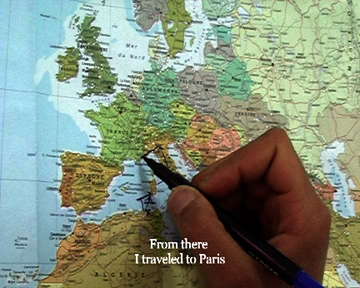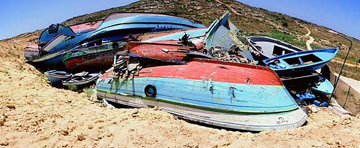In the depths of a seemingly endless New York winter, my mind is already thinking toward late spring days on the Adriatic and the 53rd International Art Exhibition at la grande dame of all international art fairs, La Biennale de Venezia. There will be sultry nights, hobnobbing amongst the cognoscenti and, most importantly, a three-gelati-per-day minimum for all art lovers.
This year’s director, Daniel Birnbaum, has eschewed sections in favor of a thematically tight mega-exhibition. Organized around mostly “process” and “painting,” 53 seems poised to steer way clear of the epic knock-down-drag-out mainly between Okwui Enwezor and Rob Storr (with several punches landed by Francesco Bonami and Jessica Morgan) over the African Pavilion at the last Biennale. Though the debate quickly descended into sheer mudslinging, primarily at issue was Storr’s over-reliance on the holdings of a morally suspect Congolese collector. This time around, no African “big men” are rearing their heads, the unglamorous but stable and relatively prosperous west African nation of Gabon is participating for the first time and Mother Africa is present in Venice in a wonderful display of peace and inclusivity.
As it happens, I am re-reading Miwon Kwon’s book on site-specificity, One Place After Another, and like any good student of critical theory, I believe context gives meaning. I am having a hard time thinking about Italy outside the context of Africa, or more specifically, the increasingly precarious situation of African immigrants.
In the past few years, tens of thousands of Africans have illegally landed on southern Italian shores. While this is clearly many more than the southern towns and islands can legally process, police and support, the angst over the rapidly arriving clandestini has fueled xenophobic legislation, attacks against and murders of eastern Europeans, Roma and Africans—not to mention the number of immigrants who die either in boat crossings or are killed once they land ashore. I don’t mean to make too light of the situation, but you know something’s going slightly awry in Italy when there’s a serious move afoot that could possibly ban Sicilian cuisine in the north of the country.
The Biennale bears no responsibility for any of these racist developments, clearly, but there’s no point in burying well-coiffed heads in the Giardini’s gravel about it. And if the news is too depressing for any dear readers, I’d like to suggest two fantastic art projects that have deftly and poetically presented the movement of immigrant bodies through the Italian landscape.
Moroccan-born French artist, Bouchra Khalili, recently made a series of videos called Mapping Journey that trace the routes of several African immigrants through Italy to France where they have ultimately joined the French Foreign Legion.

Bouchra Khalili, "Mapping Journey #1," 2008
Very short and shot from a single vantage point in a documentary style, the videos leave the viewer almost confused while watching the matter-of-fact way the anonymous subjects dryly narrate their dangerous (and often multiple) attempts to cross the Mediterranean, slip past borders and only to find a safe haven in a military hangover from imperial France.
Isaac Julien’s high-calorie films and videos are as lush and beautiful as Khalili’s are straightforward and his WESTERN UNION: Small Boats (2007) is no exception.

Isaac Julien, "WESTERN UNION Series No. 8 (Sculpture for a New Millenium)," 2007
In a project encompassing multi-channel video, photography, installation and a collaboration with choreographer Russell Maliphant, Julien moves his viewers wordlessly through a sweeping visual tale of vulnerable bodies in sublime southern Italian landscapes. In interior scenes, Julien situates his protagonists in a baroque ballroom that Luchino Visconti fans (count me among the faithful) will recognize from The Leopard and, like Visconti’s epic film about an Italy in cultural crisis, WESTERN UNION is downright decadent in its beauty.




Pingback: Venice seen by the others: gelati « OddTag